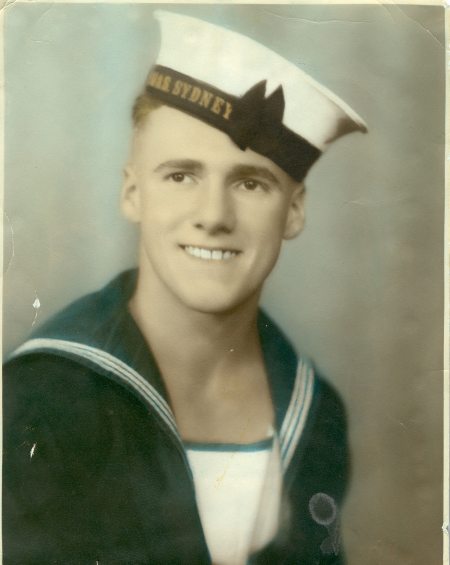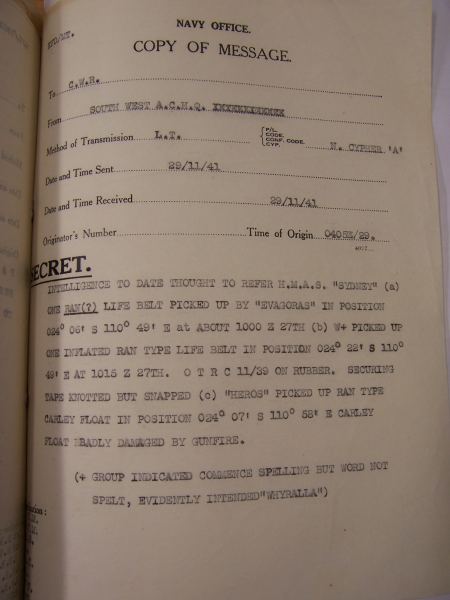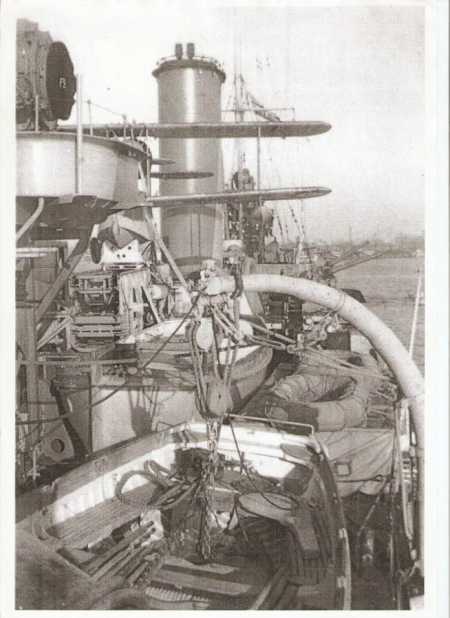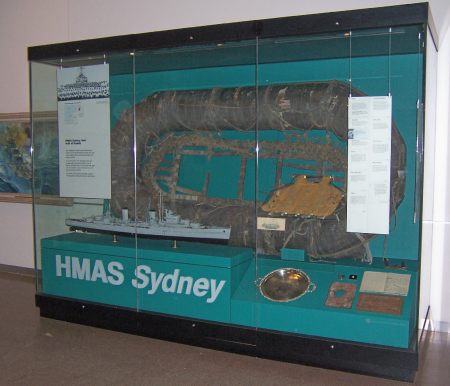David Mearns - Search Director, The Finding Sydney Foundation
We ran our first "higher-resolution" line late last evening past some suspicious looking sonar targets at the southern extremity of our search box. By higher-resolution, I mean that the SM30 sonar was operated at a narrower swathe setting than the normal 6km swathe we have used since the start of the search. In simple terms the objective of a higher-resolution sonar pass is to magnify the targets in question so more detail is revealed in the sonar image making it easier to identify the objects. In this case the swathe was reduced to 3km, which can only be considered "higher-resolution" in relation to the SM30 sonar because most other high-resolution side-scan sonars have a maximum swathe of only 150 metres.
The other benefit of a second sonar line is that the targets are seen from a different angle, which often reveals details unseen in the original sonar images. The targets in question turned out to be a field of outcropping rocks that were similar in ways to a wreckage debris field and thus needed to be double-checked. With these targets ruled out we turned our attention back north to the primary search box.
When either the wreck of Kormoran or Sydney is found we have far more scope for collecting higher resolution sonar imagery to help confirm their identity and condition. The SM30 sonar can be operated at swathes as narrow as 750 metres and the higher frequency AMS60 sonar as narrow as 125 metres. We therefore have almost an infinite ability to collect progressively higher magnified sonar images of the wrecks. I think I speak for everyone on board the vessel that we are all looking forward to the opportunity to image the wrecks this way.
Glenys McDonald - Director, The Finding Sydney Foundation (Observer)
Today I have been thinking a lot about the 645 men who were lost on HMAS Sydney. As secretary of the Geraldton HMAS Sydney Memorial Steering Committee and during my research, I came into contact with a large number of the relatives of the crew. I was honoured when they shared stories, letters and photographs of their loved ones with me.
What becomes immediately apparent when I go through my collection of photographs is the collective youth that we lost on the 19 November 1941. One crewmember, eighteen year old Stoker 2nd Class, Jack Crowle had the foresight to think how devastated his mother would be if he was lost at sea. So he wrote a letter to be given to her if such an event transpired. In that letter of comfort, Jack told his mother to “remember that I lived and died an Australian and I don’t think there is any greater honour”. Jack also said that he was not afraid of death and would prefer to die in no other way than doing his duty.
Keith Shegog did a remarkable job of collating many stories and photographs for posterity for the 60th Anniversary of the battle. The Finding Sydney Foundation would like to build on his work to provide an online virtual memorial to the men of HMAS Sydney on our website. Our aim is to have a photograph and story for each of the men. If any relative would like to be part of this concept I encourage them to contact FSF via the address on the Contact Page of this website.

Above Photograph - Stoker 2nd Class Jack Crowle
John Perryman - Senior Navy Historian (Observer)
Late yesterday we investigated a promising contact to the south which had been detected a few days ago during our approach run into line number 8. While it displayed some characteristics commensurate with being a man made object it was later dismissed as being a geological feature amidst a field of other vexing geological anomalies. Today we are slowly making our way north once again as we continue to gradually reduce the size of the main search box.
Historical Anecdote.
The most significant piece of wreckage attributed to HMAS Sydney (II) was a life raft known as a pattern No. 20 Carley float. This was recovered by HMAS Heros during the search for survivors on 28 November 1941 in position 24° 07’ South 110° 58 East.
This type of floatation device was designed to provide life support for up to twenty men, twelve of whom could be accommodated within the float, while eight more could cling to lifelines attached to its outer shell. The Carley float was reported at the time to have been badly damaged by gunfire. This float was offered to the Australian War Memorial for preservation by the Naval Board in July 1942 and has been on display since that time as a tribute to Sydney’s crew.

Above Photograph - Signal reporting HMAS Heros recovery of Sydney Carley float.

Above Photograph - HMAS Sydney with Carley floats stowed on upper decks

Above Photograph - HMAS Sydney Carley float on display in the Australian War Memorial, Canberra, ACT
IMPORTANT NOTICE: The Material (including photographs) available in the "Press Room" section of this Website may be used/reproduced unaltered by your organisation (unless stated otherwise within the content description) subject to the terms and conditions set out in the Legal Section AND any Material (including photographs) which you use/reproduce must credit the source as "The Finding Sydney Foundation" and, as an option, you may also link the source statement with the website address http://www.findingsydney.com/.